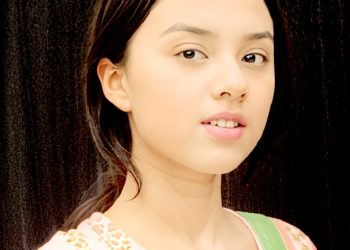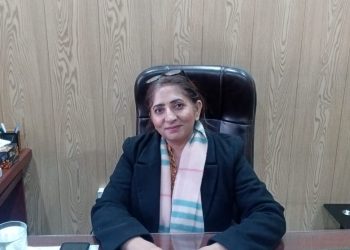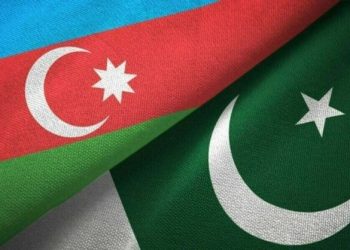Dr. Muhammad Afzal Babar, Founder and
Central President, Private Schools Network
It is an accepted principle all over the world that human capital is the greatest capital of all. The nations that decided to climb the ladder of development by honing their human capital capabilities were the first to reach their destination. In the recent past, we see examples of Japan and Germany, which apparently faced defeat as a result of world wars, but despite being conquered, they immediately joined the ranks of developed nations by honing their human capabilities and using modern science as a weapon in their schools. We are one in that for 78 years, we have been at the bottom of the global horizon, let alone in the regional graph. As I am writing these lines, there are about half a dozen official, semi-official and private invitations on my desk, announcing that events are being organized to celebrate International Literacy Day. The problem of illiteracy is acute in Pakistan, with about 67 million illiterate adults and the literacy rate has stagnated at about 62.3 percent since 2011. Major causes include persistent poverty, underinvestment in education, gender inequality, cultural attitudes and child labour, which prevent millions of children from attending school. This crisis significantly hinders national development, increases poverty and widens gender inequality, making comprehensive education reforms essential for the future of the country. The United Nations has been celebrating International Literacy Day annually on 8 September since 1967 to remind policymakers, practitioners and the public of the critical importance of literacy in building more literate, just, peaceful and sustainable societies. A literate society is a fundamental human right for all. It opens the door to the enjoyment of other human rights, greater freedoms and global citizenship. Literacy is a foundation for people to acquire broader knowledge, skills, values, attitudes and behaviours in order to promote a culture of sustainable peace based on equality and non-discrimination, the rule of law, solidarity, justice, diversity and respect for tolerance. Building harmonious relationships with our fellow humans and the planet. However, in 2022, at least 765 million adults (15 years and older) on the planet lacked basic literacy skills. Moreover, millions of children are struggling to acquire minimal literacy and numeracy skills, while about 250 million children between the ages of 6 and 18 are out of school. This year, the theme of International Literacy Day 2025 is “Promoting Literacy in the Digital Age”. I still remember that in 2009, when work on the 18th Amendment began, in a period of more than 9 months, the Constitution of Pakistan was cleansed of authoritarian amendments on the one hand, and on the other hand, some decisions were also made that were highly appreciated by the public. These decisions include 25-A, according to which it is the duty of governments to provide free and compulsory education to every child of the motherland between the ages of 5 and 16. Now, 15 years after the 18th Constitutional Amendment, we ourselves have admitted our failure in the Millennium Development Goals. 10 years have passed since we signed the SDGs. Officially, the performance will come out in 2030, but the annual population increase And the policies that confuse the nation through the cut-and-paste reports of our central and provincial governments will have to be accounted for in this world and the hereafter. The statistics that are available in Pakistan’s digital sources are not as encouraging as the 2023 census data, which shows that Pakistan’s literacy rate is around 60-62%, with a significant gender gap and the rate of males (68%) is higher than that of females (52.8%). Progress in literacy is slow. The overall rate has only increased slightly in recent years, which is also facing the challenges of population growth and disparity between rural and urban areas. Despite some gains, the literacy rate has only gradually improved and is somewhat stagnant compared to other nations. Pakistan’s rapid population growth makes it difficult to increase the literacy rate rapidly. The literacy rate may vary between provinces and between urban and rural areas. Factors such as poverty and limited access to quality education, especially in rural areas, play a major role in reducing literacy levels. The government and education advocates have been emphasizing the need to increase education spending. Three years ago, the Chief Executive (Prime Minister) of the PDM government was advised by the same statisticians to declare an education emergency, under which several hundred million were allocated on the slogan of zero out-of-school children. After the fall of the PDM government, the caretaker government and now the coalition government are back in power at the center and in the provinces, except for one province. When I tried to review the statistics, I felt as if we were going to do many times worse with the SDGs than we did with the MDGs. Pakistan has made slow and stagnant progress towards achieving the 4 SDGs (quality education), with the national literacy rate stagnating for many years and the completion rate at higher education levels being low. Challenges include significant gender disparities in education, lack of basic school facilities, and inadequate funding, etc. A mid-term review report was recently launched in February 2025, highlighting challenges and recommending concrete actions, including substantial investment and a unified data-driven approach to accelerate the development and bring all stakeholders together to achieve the 2030 education goals.















